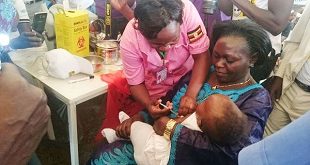Attempts to measure the reservoir
In 1995, it was Siliciano’s lab that first officially showed the existence of the reservoir itself. That research was published in Nature, too.
Since then, efforts to effectively measure the reservoir have mostly been trial and error. Dr. Una O’Doherty, PhD, associate professor of pathology and laboratory medicine at the Hospital of the University of Pennsylvania at the Perelman School of Medicine, told Healthline that before the advent of antiretroviral therapy, it was fairly easy to measure a person’s HIV viral load and CD4 count.
Now, with therapies leaving many with such low amounts of the virus that it’s undetectable, it’s hard to come up with an accurate measure.
She explained that the majority of HIV in the human genome — or proviruses — becomes damaged, most likely due to the virus’s inaccurate replication cycle.
Given that so much of this damaged HIV DNA is in the bloodstream of infected people, it’s difficult to sometimes parse the defective HIV from the latent reservoir of HIV genomes that have the potential to make new, active viruses.
Research out of Siliciano’s lab by Dr. Ya–Chi Ho, PhD, assistant professor of microbial pathogenesis and medicine at Yale School of Medicine, revealed 93 percent of all proviruses are damaged and defective, which offers up a confusing smokescreen of sorts for scientists in trying to find this reservoir.
“It feels very much like looking into the darkness,” O’Doherty said. “When you are testing clinical trials, did these measures of HIV DNA increase or decrease? Some people would take patients off therapy to try to measure how fast the virus didn’t come back. Over those two decades, we fought with each other what is the best way to measure this. Everything fell short, in my opinion.”
O’Doherty said sequencing the mass of proviruses in an infected person is heavily labour intensive. She said the field has to “get much better at processing big data” if it can effectively do this.
Satish K. Pillai, PhD, associate professor of laboratory medicine at University of California, San Francisco (UCSF), told Healthline that better understanding and quantifying the latent reservoir is the “heart and soul of where the HIV cure field is going.”
He said his own lab right now is working on quantifying the size of the reservoir and trying to “biologically characterise the latent cells” and how they look different from unaffected cells and “productively infected cells.”
“This is another challenge in the field, knowing more about how latently infected cells look. If you know how they look, you have a better chance to actually destroy them,” Pillai said. “We have a limited understanding of how latently infected cells behave in vivo (in an actual person). We don’t have much information on how they are different from productively infected cells in actual infected human beings. The reason being is that the cells hang out for so long with the virus sitting in them, so that they are immunologically invisible.”
He said that increasingly more research suggests that “signature characteristics” of cells with HIV should allow researchers to eventually be able to identify them mixed in with a population of the defective cells.
“Right now, our lab is using a lot of approaches to drill deep down to see how these latently infected cells look different from their neighbors, to identify biomarkers and molecular mechanisms in cells allow the virus to be in this latent pharmacological state in infected cells,” Pillai explained.
The need for a cure
Siliciano said we can’t really say that we can see a “light at the end of the tunnel” when it comes to an actual HIV cure. But, this research gives scientists a step in the right direction in better measuring HIV levels in the human body.
The need for a cure is certainly there. Since the start of the HIV/AIDS epidemic, more than 70 million people have been infected with HIV and about 35 million have died from it.
Right now, countries in sub-Saharan Africa are most impacted. The World Health Organization reports that, in the region, one out of every 25 adults live with HIV.
In the U.S., about 1,122,900 adults and adolescents were reported to have the virus by the end of 2015, according to the Centers for Disease Control and Prevention.
“The new study and this method is an incredibly elegant and intuitively interesting and promising approach,” Pillai said of Siliciano’s research. “At end of day, we need to see if this approach can actually tell us anything — can this approach predict something in the clinic that we care about?”
He further explained, “What we care about is what happens when the antiretroviral treatment stops. Can we use this approach to characterise the genetics of HIV in a clinical sample, and make reasonably accurate predictions about how long it’s going to take for the virus to come back?”
O’Doherty said it will be interesting to see what happens once Siliciano’s method starts being applied widely in HIV research labs.
“I want to reinforce something — I don’t think the study makes ‘a cure’ more possible,” she stressed. “I think it makes it more possible to reevaluate trials. But I think that’s huge. We were caught being in the darkness and now we will have a better understanding.”
****
Source: healthline
 The Independent Uganda: You get the Truth we Pay the Price
The Independent Uganda: You get the Truth we Pay the Price


